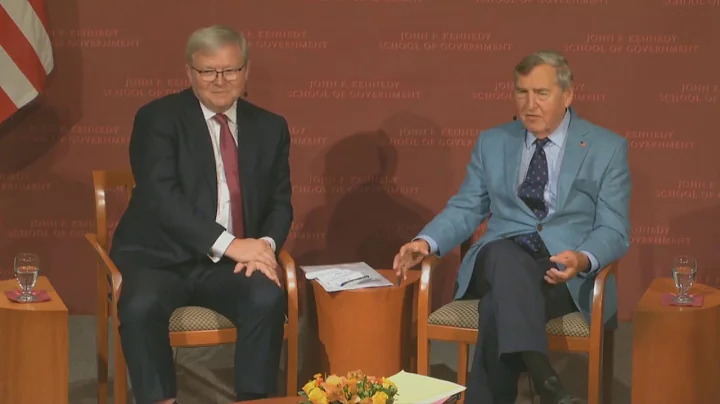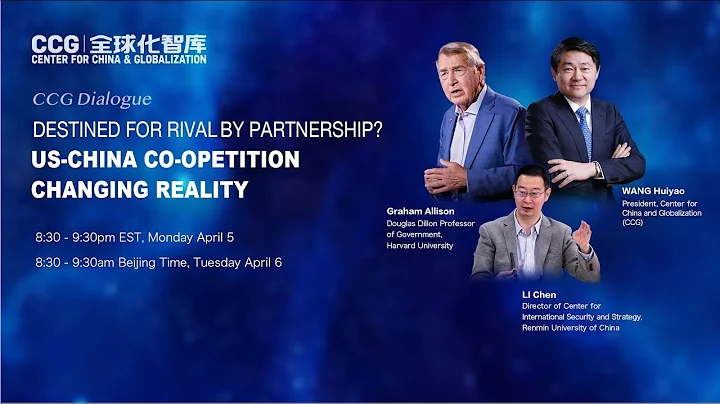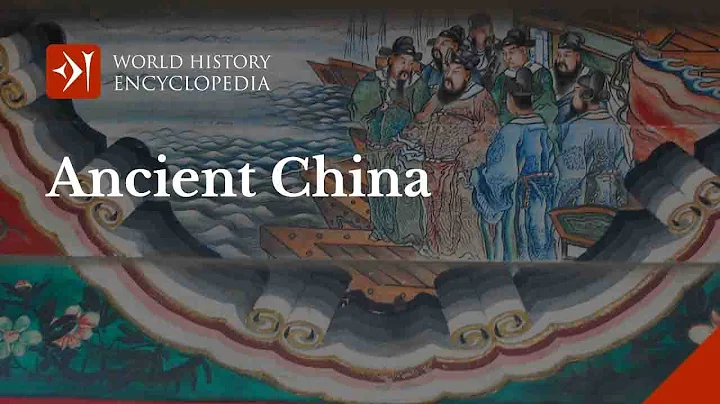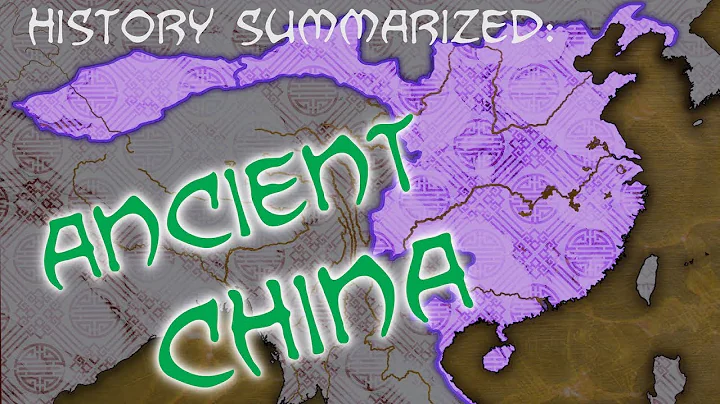The U.S. government recently received a policy proposal on chips. The report was written by two people. One is Graham Allison, director of the Center for International Affairs at Harvard University's Kennedy School of Government. , this name may not be familiar to you. You are familiar with it, but you must have heard of the Thucydides Trap that great powers must fight. Allison is the proposer of the theory!

Graham Allison
In 2010, Graham Allison based the history of the Peloponnesian War written by the ancient Greek historian Thucydides, and then through 16 modern Western history Based on the study of the 12 groups of imperial hegemony changes that all led to war, we came to a conclusion that almost subverted Sino-US relations: An emerging power will inevitably challenge the status of an established power, and the established power will inevitably take measures to do so. Containment and suppression, conflict and even war between the two. Therefore, it is impossible to escape a battle between China and the United States!
Graham Allison’s Thucydides Trap theory caused a huge sensation among the American elite after it was proposed! The reason is simple: whether looking at the bloody colonial history of Europe and the United States or the refined egoism of white supremacy, the core idea of Thucydides Trap zero-sum game that the strong are respected is very consistent with their mainstream values. .

And that year happened to coincide with the peak of China’s manufacturing output. A sense of anxiety and crisis permeated the entire American society from the industrial world to the political world to the military. There is no doubt that Thucydides’ Trap provides a rational outlet for their hostility toward China.
Do you still remember the famous saying of Obama:
If 1.4 billion Chinese people are allowed to live like Americans, it will be a disaster for the earth.
In a sense, Obama’s second-term Asia-Pacific rebalancing strategy of blocking and surrounding China was more or less influenced by Thucydides’ Trap.
The other is former chairman of Google Eric Schmidt. He also has another identity. He is the founder of the American think tank China Strategy Group CSG. As you can tell from the name, this think tank specializes in studying China. .
The backgrounds of CSG and Eric Schmidt are not simple. The former is composed of a group of top technology, diplomacy and national security people. They have formed a perfect division of labor system: Technology experts conduct a survey on the current status of technology and industry in the two countries. Detailed analysis and formulation of a specific action plan; diplomats put forward relevant foreign affairs suggestions on the plan, because the basis of the U.S. technology war against China is the alliance; national security experts assessed the risk factor of the relationship between the two countries under the competition of this plan, and emergency plan after the accident .

Eric Schmidt
Eric Schmidt is a top student in computer science at the University of California, Berkeley. His resume is not only Google , but also served as the director of Apple . His rich professional knowledge and career in various fields such as basic technology, supply chain, and platform terminals have played an extraordinary and important role in the US government's deep understanding of this unprecedented competition between China and the United States!
Last year, just a few days after Biden came to power, Eric Schmidt led his CSG to submit a 33-page, nearly 100,000-word strategy report to the White House on how to deal with China’s technological competition. The solution given by the
report is an alliance war:
unites Japan, Germany, Canada, the Netherlands, , France, the United Kingdom, South Korea, Finland , Sweden , India, Israel , Australia and other countries to form a T- 12 forums.
And this T-12 forum is essentially a super anti-China alliance covering the three core competition areas of ideology , geopolitics, and technology battlefield.The above 12 countries are all countries with democratic values; Japan, India and Australia are the support points of the Indo-Pacific strategy; Japan, Britain, France, Germany, Finland and the Netherlands are important countries in all aspects of the Western semiconductor supply chain.

From the backgrounds of Graham Allison and Eric Schmidt, it can be clearly seen that this policy proposal is not simply a technological issue, but also has a large component of geopolitical issues between China and the United States. The
proposal begins with a positive response to the industry’s concerns about the resumption of chip manufacturing in the United States!
TSMC founder Zhang Zhongmou said that the United States spending more than 50 billion US dollars in subsidies to help them become industry leaders is expensive, wasteful and futile. As a towering figure in the chip foundry industry, Zhang Zhongmou has repeatedly badmouthed the United States, which seems to be a death sentence for the United States' vision to reshape the chip manufacturing industry on the industrial side. At least most people in the industry have the same view as him.
We have analyzed this topic many times before. The reasons are roughly due to the following aspects: First, the chip manufacturing industry is an engineer-intensive industry, and the number of STEM graduates in the United States can no longer support the huge demand for talents in the industry; second, the chip manufacturing industry is an engineer-intensive industry. Manufacturing is an infrastructure-intensive industry. The water and electricity required for one day of production is what an ordinary town consumes for a year. The U.S. infrastructure is too vast and cannot keep up with high-intensity sports. The third is the geographical location of the United States and the mainstream chip supply chain. Downstream terminal manufacturers and the consumer market are far apart, and completely inconsistent with the efficiency-driven and cost-driven principles of commercial investment!
Graham Allison did not respond positively to this, but pointed out from a geographical perspective that completely relying on Taiwan in the field of advanced chips would endanger the national security of the United States because of the manufacturing of smartphones laptops and 92% of the advanced chips required for ballistic missile are manufactured by TSMC!
He also quoted former U.S. Defense Secretary Robert Walker’s warning:
Our chip capabilities went from being two generations ahead to possibly two generations behind, and the middle distance is only 110 miles, that is, the distance from mainland China to Taipei. What does
mean?
The United States can no longer solve industrial problems with industrial means. It must solve industrial problems with the will of the country.

After giving the general action plan, it is recommended not to rush to list specific action plans, but to first throw out a set of data to illustrate the urgency and severity of solving the problem: From 1990 to 2020, China built 32 production chips of super factories, while there are only 24 factories in other parts of the world combined. If the US government does not make adjustments, mainland China will become the world's largest chip manufacturing country as early as 2025!
In addition, it is suggested that China is also deeply concerned about China's influence in the semiconductor supply chain. In the upstream raw material field, China produces 70% of the world's silicon, 80% of tungsten, and 97% of gallium; in the downstream In the field of packaging, China supplies more than half of the world's circuit boards .
The American think tank is particularly worried that our chip development will replicate the manufacturing path of the past : that is, through the cluster layout of various parts and components combined with the huge consumer market, we will firmly control the international supply chain. Dominance !
First exaggerating how powerful the opponent is and how big a threat it poses to the United States seems to have become an effective trick or technical operation method used by American think tanks when writing reports. This actually reflects the absence of the White House on science and technology affairs.
As we all know, since the third industrial revolution , the United States has been leading the world in technology for a long time, and few countries can match it. If these people stay in a superior and comfortable environment for a long time, they will definitely have a numb mentality. Over time, the United States will The elites take it for granted that I am invincible and everyone else is rubbish. As a result, the White House staff team has fewer technocrats who are proficient in technology.
During Obama’s second term, the President’s Science and Technology Advisory Committee submitted a technology industry report to the White House, stating that China’s semiconductor technology development had threatened U.S. chip manufacturers and U.S. national security, and recommended that Obama take practical actions Suppressing the rise of China's semiconductor industry, but at that time the Democratic Party was busy with the general election and did not pay attention to the report at all.

If you look at Biden’s staff team, the nine members are either lawyers or politicians, and none of them has a technical background or relevant experience. It is undeniable that the absence of technocrats in the White House advisory team has, to a certain extent, slowed down the response of U.S. decision-makers to the technology war. If can successfully survive the mid-term elections, it should strengthen team building in this area.
After talking about how far China’s chip manufacturing industry has progressed and how imminent the crisis facing the United States is, Graham Allison and Eric Schmidt finally gave three practical countermeasures.
The first two countermeasures are relatively cliché. First, we must strengthen the connection between R&D and manufacturing, because when technology enters mass production, it needs to use new processes and materials to continuously improve the performance and adaptability of products. This can lead the technology to a higher level. innovate in the field. The current dilemma of the United States is that its R&D base is in North America and its production base is in East Asia. The cross-border separation of the two has seriously damaged its company's ability to continue to innovate!
Secondly, we should take advantage of the geographical influence of the United States in East Asia, that is, the presence of the US military in Japan and South Korea, and first divert part of Taiwan's chip production capacity to South Korea to prevent it from being monopolized.
The real big move is the third one. The suggestion clearly states: The White House does not need to demand that TSMC transfer production lines with processes below 7 nanometers to reshape its high-end chip manufacturing industry. Instead, it should vigorously develop ordinary chips with low-cost manufacturing processes!
Schmidt is worthy of being a top practitioner who has led two major ICT giants, Apple and Google. This policy proposal is enough to demonstrate his precise strategic vision.
After the White House’s ban on Huawei took effect, most people believe that the victory or defeat in the Sino-US technology war centered on semiconductors lies in the advanced process field below 7 nanometers. But in fact, the chip battlefield below 7 nanometers is only an important battlefield, not a decisive battlefield.
The reasons are as follows:
First, Moore's Law has reached the limit : Moore's Law is the basic theory of the semiconductor industry, which means that the number of original components that can be accommodated on an integrated circuit will double almost every 18 to 24 months. Correspondingly The computer performance that can be purchased for every US$1 will double every 18 to 24 months. This law perfectly explains the speed of progress in IT technology.
To put it simply, the lower the chip manufacturing process, the more transistors can be accommodated, and the corresponding processor performance will naturally be better. In the past fifty years, thanks to the scaling of process nodes and advances in semiconductor equipment, the number of transistors on each wafer has increased by more than 10 million times, resulting in a nearly 10,000-fold increase in processor speed, while the annual cost has decreased by 45%. More than % , this is the fundamental reason why human beings can transition from huge brick machines to smart machines and spread them to the whole society!

In 2016, Gordon Moore, the founder of Moore's Law, said that it is becoming more and more difficult to continue to advance new manufacturing nodes. I don't know how long Moore's Law can last. A year later, Nvidia CEO Jensen Huang, the world's top semiconductor manufacturer, admitted that Moore's Law has ended because designers can no longer create a GPU architecture that can achieve higher instruction set parallelism. The number of transistors has increased by 50% every year, but the performance of CPU has only increased every year. 10%.
TSMC, which is at the forefront of chip manufacturing, understands this feeling more closely.
After TSMC broke through the 14nm process chip, the R&D team found that each time they broke through a new process, the time consumption was often several times that of the previous one!
It is predicted that under the current technical environment, 1 nanometer will be the limit of the chip manufacturing process. Now the manufacturing process of commercial chips has reached 3 nanometers, and the chip manufacturing process in the research and development stage has reached 2 nanometers. This means that there will be at most ten years before the traditional semiconductor chip can no longer be used .
In the chip race between China and the United States, China used to be running and the United States was also running. It must be very difficult to catch up. But now the United States can no longer run, and China is still running, and the speed of catching up will only get faster and faster.
In other words, unless the United States can launch a new technological revolution in a short period of time, China will definitely be able to successfully break out of its blockade. Therefore, it is not China that should be worried, but the United States! Since cannot change the status quo, then it no longer has any strategic significance to insist on the manufacturing capabilities of advanced process chips !
Second, the market share of advanced process chips is very small : According to China Semiconductor Industry Association 2021 report, the market share of advanced process chips below 7 nanometers is only 2%, while semiconductors with 14 nanometer and above processes Chips account for 70% of the entire semiconductor market. China can basically commercialize and mass-produce chips in this range!

In TSMC’s first quarter 2022 financial report, the revenue of 14nm and above processes accounted for 60%
Third, the downstream market of advanced process chips is shrinking, while the downstream market of 14nm and above process chips is expanding rapidly:7 High-end chips below the nanometer level are mainly used in consumer electronics, such as smartphones and tablets. In the first quarter of this year, China's smartphone shipments were 33.022 million units, a year-on-year decrease of 17.7%; during the same period, global smartphone shipments were 308 million units, a year-on-year decrease of 12.9%. Calculated from the first negative growth in 2018, global smartphone shipments have shrunk for four consecutive years!

Smartphones are the largest terminal application provider of high-end chips. The decline in sales will inevitably lead to a shrinking of chip demand. In the past few years, many mobile phone manufacturers such as Apple Xiaomi Huawei have switched to the field of electric vehicles. This is precisely because they have seen the smartphone market become more and more red ocean and are trying to open up new growth points.
Chips with 14nm and above processes are mostly used in new energy vehicles.
We have analyzed in the previous article that in addition to power, the most significant feature of new energy vehicles is their high degree of intelligence and electronics, which requires the support of tens of thousands of semiconductor chips. Therefore, new energy vehicles have replaced traditional vehicles on a large scale around the world. Against the background of fuel vehicles, the automobile industry is emerging as the largest downstream terminal supplier in the chip industry. And China is the well-deserved king in this field.
In the middle of this month, when the Ministry of Industry, Trade and Energy of South Korea was sorting out data, they found that the trade volume between South Korea and China in May had a deficit of more than 1.1 billion U.S. dollars. This surprised and shocked them because this was the first year of China-South Korea trade in 1994. South Korea has posted a deficit for the first time since August. After a detailed investigation, they finally discovered the root cause: the problem occurred in the semiconductor!
In South Korea’s trade structure with China, the top imported and exported goods are semiconductors. South Korea’s semiconductor exports to China only increased by 11% last month, but semiconductor imports from China increased by 40.9% compared with the same period last year. The most imported semiconductors are automotive semiconductors!

The proportion of various commodities in China-South Korea trade in May this year, the left is South Korea’s exports, and the right is South Korea’s imports from China
Among them, semiconductors occupy the first place
On June 24, local time, Wall Street institutional analysts in the financial The Times wrote:
China is trying to position itself as Saudi Arabia in the field of new energy technology hardware, becoming the lowest-cost supplier and gaining the highest market share.
From the policy recommendations of Allison and Schmidt to this article on Wall Street, it shows that American policy elites have realized that something is wrong: China is determined to win the technology and technology of advanced process chips, but it has never been the main force. Rather, it is a feint attack force that attracts the attention of the United States. China's real main force is "backward" chips with processes above 14 nanometers. This is a surprise force. It will use China's full industry chain advantages and export advantages in the field of new energy vehicles to drive The market territory of China's semiconductor manufacturing industry has expanded rapidly. After gaining a monopoly advantage, it will then launch a siege against the high-end chip positions guarded by the United States.!
for four years!
The United States finally realized that it had been mobilized away from the mountain, so it hurriedly mobilized its troops back to defend, but now it is too late...











![[Original text] In autumn, in the seventh month, the imperial edict was made to establish Crown Prince Jian of Yanci as King of Guangyang, and Prince Hong of Prince Xu of Guangling as King of Gaomi. At the beginning, Shangguan Jie and Huo Guang fought for power. After Guang had J - DayDayNews](https://cdn.daydaynews.cc/wp-content/themes/begin/img/loading.gif)









